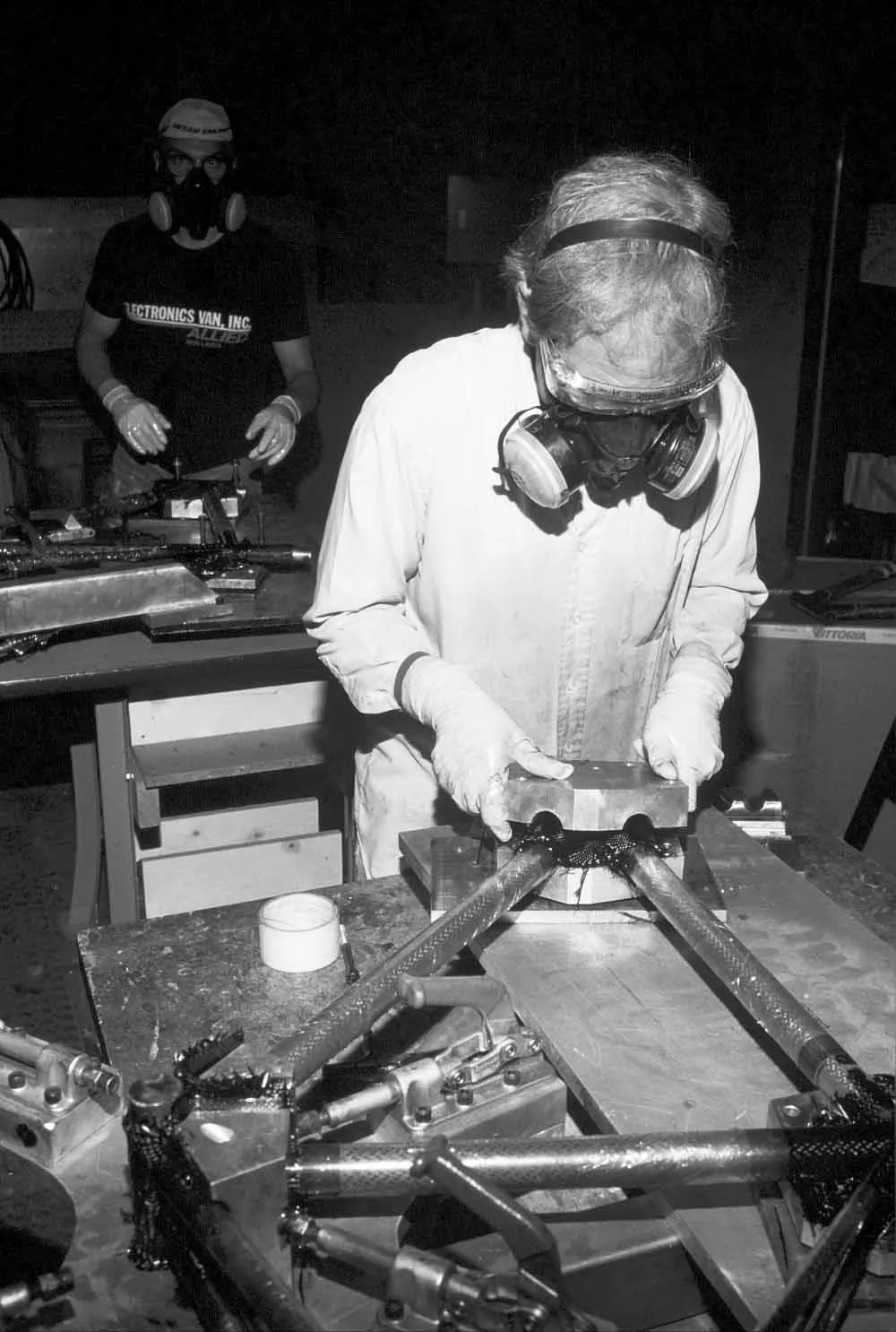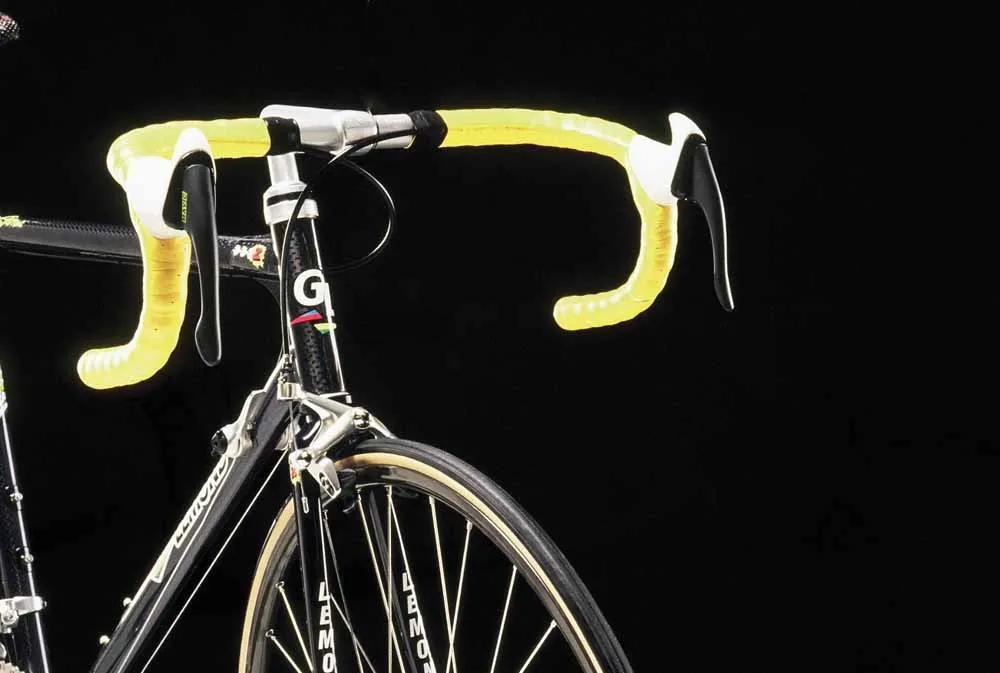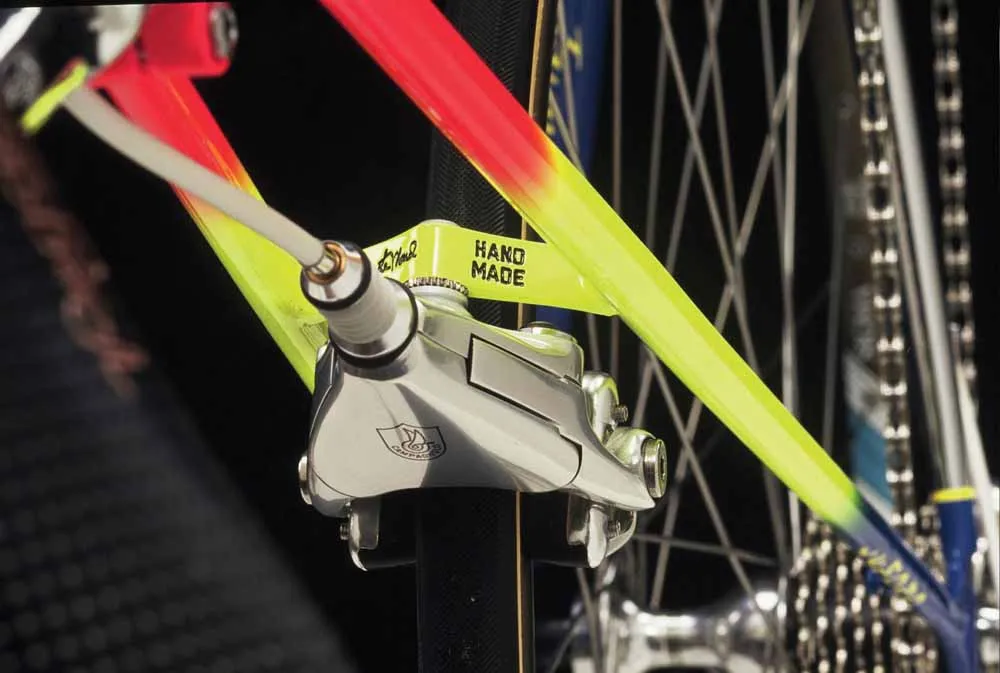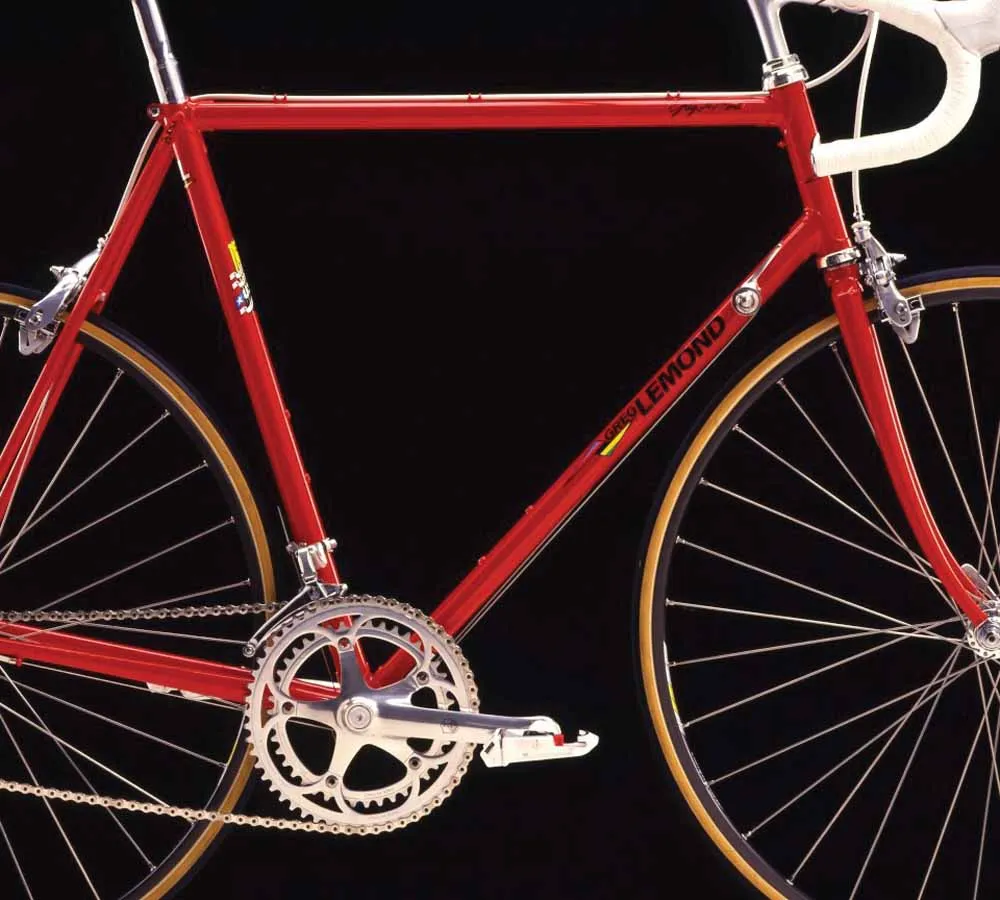Back in August BikeRadar brought you news of Bike! A Tribute to the World’s Greatest Cycling Designers. Co-edited by freelance cycling scribe Richard Moore and Cyclingnews.com managing editor Daniel Benson, it’s an in-depth look at 49 designers who’ve shaped the world of cycling, in particular on the road.
Published by Aurum Press, it’s available now for £25, and we have an exclusive extract from the book to share, on pro rider and influential designer Greg LeMond:
Greg LeMond, the United States’ pioneering three-time Tour de France winner, was always fastidious about his bikes and he adopted the same approach to the machines produced in his name, until a dispute with Trek stopped the company in its tracks.
Greg LeMond’s name is synonymous with more than innovation – more like revolution. LeMond was the American who arrived in Europe in the early 1980s and was at the forefront of the massive changes to the sport that followed, from equipment to riders’ pay, during a decade in which the European stranglehold was broken by an invasion of English-speaking riders. At the head of that invasion was LeMond. He was the first rider to sign a million-dollar contract, the first non-European to win the Tour de France (in 1986), and the first to do so on a carbon fibre bike.
For his second Tour victory in 1989, he became the first high-profile rider to use “triathlon” handlebars as he raced to the narrowest win in Tour history, and, following that success, he took cyclists’ wages into the stratosphere, signing a three-year contract worth US $5.5 million. The circle was completed for his third and final Tour win in 1990, when he rode one of his own LeMond-branded bikes.
It was in 1985 that LeMond and his father, Bob, first began discussing the possibility of setting up a family-run bike company. It was an obvious direction for him to take: LeMond was fascinated by bicycle design and biomechanics, and the LeMond name was both unusual and very marketable. His 1986 Tour victory had resonated back home in the States, with major coverage in the mainstream press and magazines such as Sports Illustrated and even Rolling Stone, not to mention an invitation to the White House from President Reagan.

A member of the LeMond team works on a frame, adjusting the chainstays
The original plan had been for the bike company to be established once LeMond retired from racing. However, the plans were accelerated when the American moved to the French superteam, La Vie Claire, in 1985, and became the first “million-dollar cyclist” (it was reported that he earned US $1 million over three years). However, on the French team, dominated by Bernard Hinault, he found himself riding a Hinault-branded steel bike. It was clunky, heavy, and sub-par, and LeMond, ever the perfectionist, was not happy. Even when he looked elsewhere, he could not find what he wanted: a perfect bike, in terms of fit and weight.
“I was looking at a lot of different bikes out there and things weren’t great and things hadn’t really advanced,” LeMond explains. “Carbon fibre was beginning to make waves so in 1986 I had La Vie Claire add into my contract that I could have my own bike deal. That was mainly because I wanted a competitive advantage. In most instances a pro is confined to ride a [certain] bike based on sponsorship, but for me it was all about finding out who the best manufacturer was. I wanted the best equipment and that became the very essence of my company.”
A deal was done by LeMond and his father with the US manufacturer Huffy, who had developed bikes for the US Olympic team in 1984. However, the bikes were unusable. “Huffy made me this bike and had it shipped to us and I remember the mechanic pulled on the fork and it literally came out like a rotten tooth,” LeMond recalls. “So I ended up using the Look team bikes in 1986, which were in fact made by TVT.”
It was on just such a bike that LeMond won that year’s Tour de France and beat his teammate Bernard Hinault after a bitter three-week battle. Behind the scenes, LeMond was developing his own line of bikes. However, he suffered a terrible setback the following spring when he was accidentally shot while hunting in the United States. He was lucky to survive, but he missed more than a year of racing and found himself scraping around for a team.
He may have been a Tour de France champion, but only two squads were willing to offer him a chance, PDM and Carrera, and he eventually settled for the former. Within a year LeMond had moved again, to the Belgian squad ADR. By now his stock had plummeted – he was no longer in a position, for example, to demand that he could ride his own choice of bike.
But 1989 turned his career around: by the end of the season he was a champion again – his bike business and his racing career flourished side by side. Although he rode a Bottecchia bike in 1989 for his second Tour win – which was also the closest ever, with LeMond pipping Fignon by eight seconds – it was on a LeMond bike (once again made with TVT carbon tubes) that he rode and won the world road race title in Chambery later that same year. It had one feature that he had craved: an extra long top tube, which allowed LeMond, with his long back, to stretch out and achieve a more aerodynamic position.
After his Tour and world championship double, LeMond was once more at the top of the tree and in a position to dictate. As well as signing a US $5.5 million contract with Z, he was able to demand that his new team (not just him) use LeMond bikes. “I was now in the driver’s seat,” he stated, “and we sponsored the teams I was on for the next five years.”
The zenith came in 1990 when LeMond not only defended his title at the Tour, but also did so on a LeMond bike. Having been the first American to win the Tour in 1986, now he became the first to do so on an American engineered machine. A year later he would be the first to ride an all-carbon road bike at the Tour de France. His contribution to the racing bike was therefore considerable. “When I came into the professional ranks very few manufacturers were replicating what the professionals were actually riding,” LeMond says. “There was a huge disconnect. What they were making were essentially touring bikes.”
However, things slowly began to unravel for LeMond, and for LeMond Bikes, after 1990. The next year he was off the pace as a new generation broke through, and at the same time the new wonder drug, EPO, began to distort the sport. The LeMond bike company also began to struggle, and the strain was evident in the relationship between LeMond and his father, who had been running the business.
LeMond had cut a deal with Japanese investors worth close to US $2 million in capital. But the deal was affected when the Japanese economy began to stutter. LeMond says only US $6,000 came through, which left the company short of funds, but running full staff and production in the United States. Road and mountain bikes were being built, all to LeMond’s specifications: racing bikes, designed for speed, rather than touring bikes.

An ergo handlebar on one of the LeMond brand’s handmade bikes
The company suffered as the relationship between LeMond and his father began to buckle. It was, says LeMond now, “one of the most painful things in my entire career.” He explains: “When I turned pro at eighteen, I was just a kid. I had my dad manage things and he really helped me get some really good contracts. During negotiations I used to be the good cop and he’d be the bad cop. People used to say ‘your dad’s a hard ass,’ but behind the scenes it was me being demanding and he was just the bearer of bad news. We were like teammates.”
The fallout from the Japanese shortfall was devastating. “It put my dad in an impossible position. He committed to people, hired them, and then this capital wasn’t coming in. My dad was right in the middle. I saw right away that we weren’t in a good position and I told my dad we needed to cut back, but he was so connected with people in the company that I had to make a decision: bike racing or the company.
“My dad became so overwhelmed and I lost all contact with him. I said to him, get someone else to manage the company and that he should come back to me. My parents felt that I didn’t trust them, but that wasn’t it, and there were a lot of emotions involved, but essentially I had to fire him. But all I really wanted was my dad back.”
LeMond put new owners in charge as the company downscaled to the bare minimum. Bikes were still produced and LeMond’s team – Z, which became Gan – used his bikes until LeMond hung up his wheels in 1995. While manufacturing slowed down, an olive branch appeared in the spring of 1995 when Trek offered to become a licenser of LeMond’s bikes. At the time Trek was struggling to penetrate the European market. Trek and LeMond signed a tenyear licensing agreement. “A huge mistake,” says LeMond now.
The agreement turned sour when LeMond had a public disagreement with Lance Armstrong, who put Trek on the map with his seven Tour de France victories. When LeMond questioned the veracity of Armstrong’s successes, it left Trek in a difficult position. LeMond, meanwhile, claimed that Trek’s response to his rift with Armstrong was to stop promoting his bikes.
A legal case finally ended the dispute between LeMond and Trek in 2008. It also effectively brought the curtain down on LeMond Bikes. Thus, a marque that, with LeMond’s interest in technology, materials, and biomechanics, could have become synonymous with top-end racing bikes, ended in bitter acrimony, and an out of court settlement that saw Trek donate an undisclosed sum to a charity of LeMond’s choosing. DB



